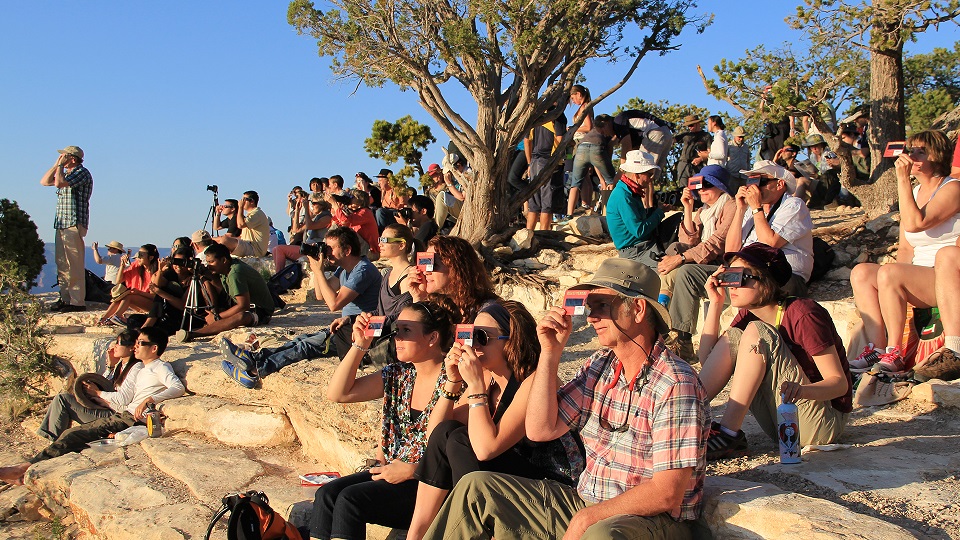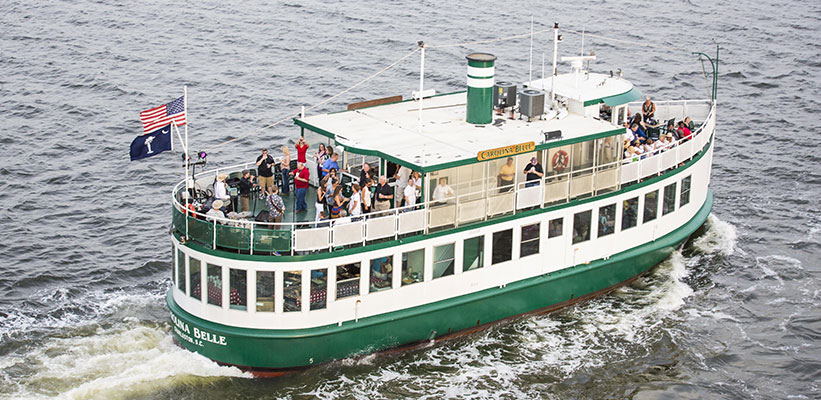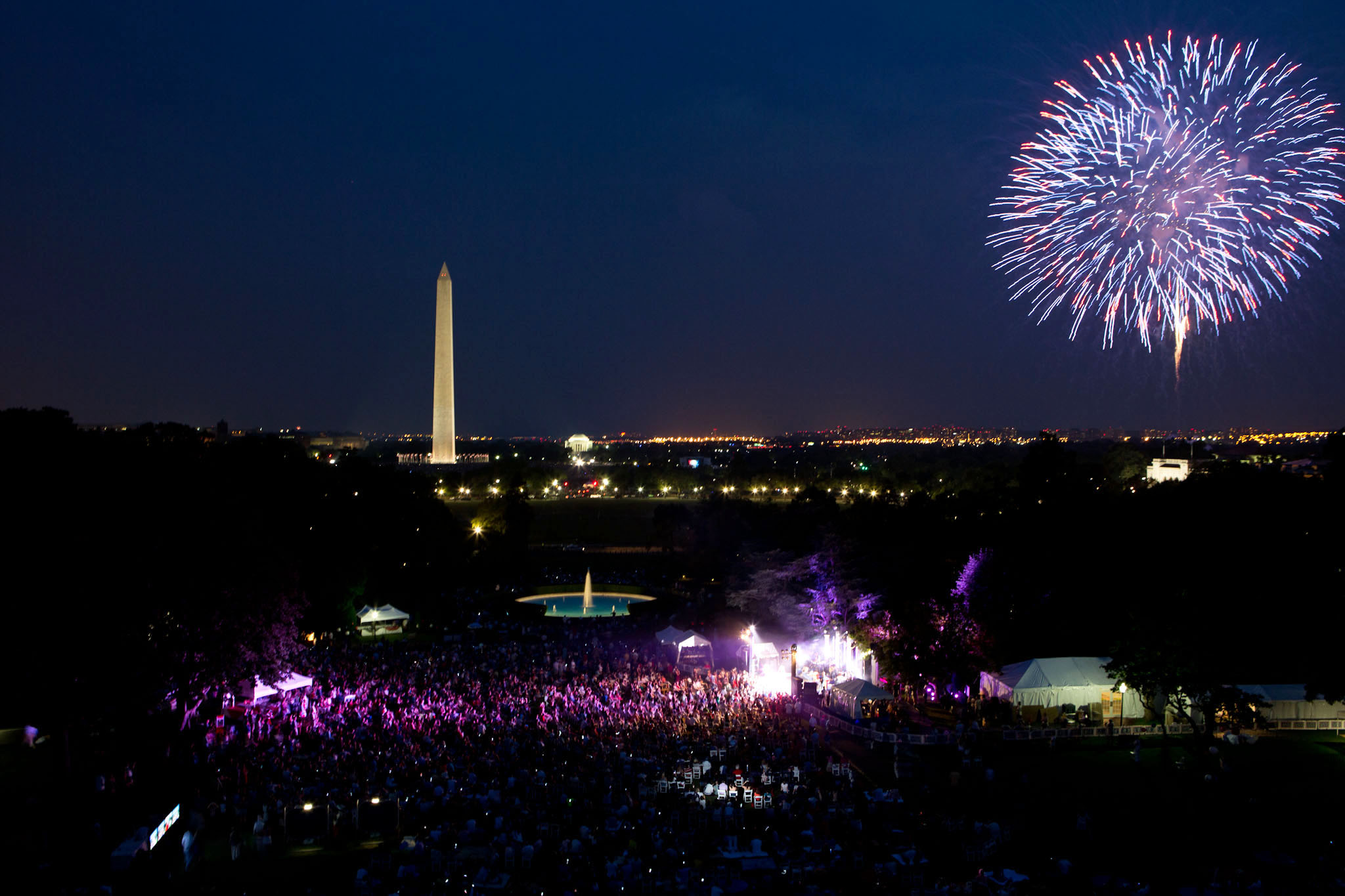America’s national parks will be premiere viewing sites for one of nature’s amazing natural phenomena, as a total solar eclipse crosses the continental United States on August 21st.
There are 21 parks and 7 trails of the National Park System from coastal Oregon and South Carolina that are within the 60- to 70-mile-wide pathway of the August 21st total solar eclipse. Viewers within the pathway will experience a 2-plus-minute period of nearly complete darkness in the middle of the day.
“It’s enough to get the hair to stand up on the back of your neck just thinking about it,” said Brian Carlstrom, deputy associate director of Natural Resource Stewardship and Science at the National Park Service. “People in the path of totality will be bathed in darkness but able to see the sun’s corona and beads of sunlight as the eclipse progresses.”
The National Park Service has partnered with NASA and other agencies, universities and community organizations to present eclipse programming at parks in the path of totality. Several parks, such as Great Smoky Mountains National Park and Homestead National Monument of America have festivals of eclipse activities. Lists of programs and activities are still coming together and are available on individual park web sites.
The 2017 eclipse is the first total solar eclipse visible in the continental United States since February 26, 1979. The last eclipse to traverse from coast to coast was June 8, 1918. On August 21 the moon’s shadow will race across the land, crossing from the Oregon coast to the point where South Carolina meets the Atlantic Ocean in just one and a half hours.
Several national parks will stream live video during the eclipse. Those viewing opportunities will be listed on the NPS 2017 Eclipse webpage.
Getting to the “path of totality”
The August 21 total eclipse is shaping up to be an extremely popular event that many people have planned to attend for a year or more. For visitors considering plans to travel to see the eclipse, it is important to make a plan in advance, since most communities near national parks that are in the path of totality anticipate record crowds, with many reporting that hotels, motels, and other lodgings are fully reserved. Towns near national parks in remote areas often have limited services, so visitors should visit park websites in advance of their trips. Travelers should expect heavily crowded restaurants, shops, and gas stations. Plan accordingly and bring necessary supplies with you.
How to look at the Eclipse
The National Park Service is also encouraging visitors to prepare to have a safe viewing opportunity during the eclipse. Looking at the sun directly, even just the sliver of sun visible before the total eclipse, can cause permanent eye damage. Homemade sun filters and regular sunglasses do not provide sufficient eye protection. The only time when it will be safe to look directly at the sun will be during the brief period when the moon entirely blocks the sun’s bright face, which will only happen in the narrow path of totality.
To view the sun during the eclipse, use eclipse glasses or a handheld solar viewer. The American Astronomical Society, a NASA partner, has verified that these manufacturers are making eclipse glasses and handheld solar viewers that meet the ISO 12312-2 international standard for such products. In addition to making sure that eclipse shades or handheld viewers meet the ISO safety standard, make sure they’re in good condition. If the filters are torn, scratched, punctured, or coming loose from their cardboard or plastic frames, discard them.
Do not look at the sun through a camera lens, telescope, binoculars, or other optical device without a specially designed filter. The sun can damage the camera sensor and harm your eyes. A pinhole projector is a safe, inexpensive means to watch the eclipse safely, if indirectly. Make sure to have safety precautions in place ahead of time to avoid the last-minute rush on solar viewers so that you can focus on the eclipse while it’s happening.
Eclipse totality will last just a few minutes; however parks and trails in the national park system offer many other adventures and activities that visitors can enjoy if they travel to these sites to view the eclipse. Each national park has a unique set of opportunities available to visitors, including hiking, guided tours, star-gazing, and boating.
The next solar eclipse visible from the continental United States will be April 8, 2024.








